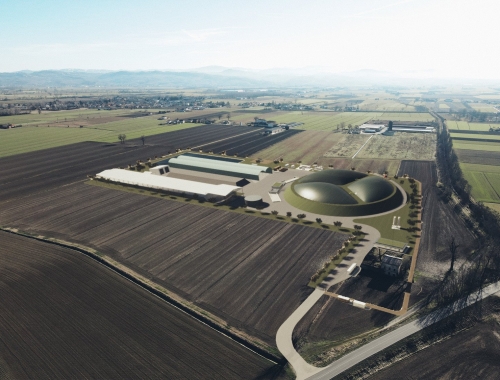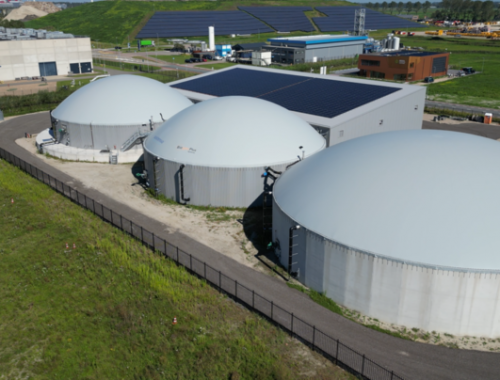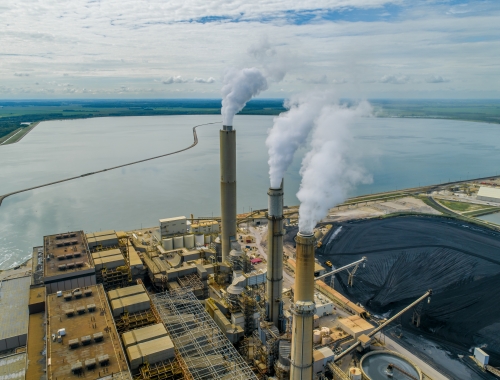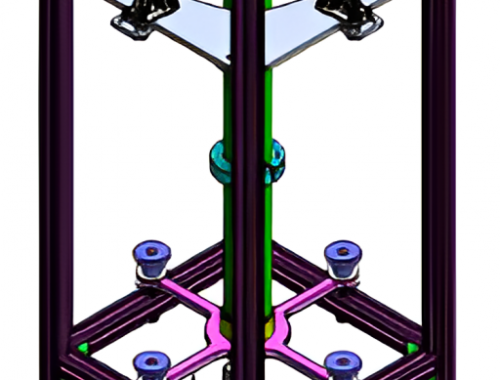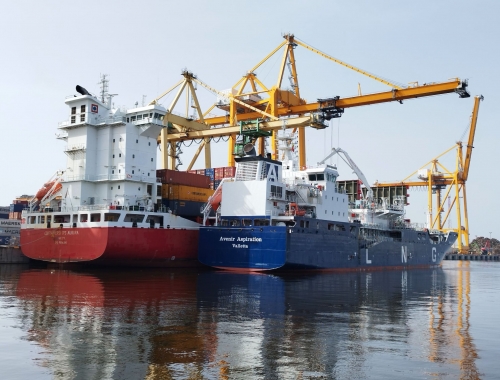CL-Invest Q&A: supporting rapid GHG emission cuts in the oil and gas industry
SUMMARY
Part of the OGCI Climate Investments portfolio, CL-Invest helps oil and gas producers finance and monetise rapid cuts in greenhouse gas emissions, CEO Arne Peder Blix tells Gas Pathways.
By Joseph MurphyTell us about CL-Invest’s history so far. How was the company founded, and what is its mission statement?
CL-Invest is a “hands-on” investment company founded in 2021 as a result of a demerger from Carbon Limits. We partner with national oil companies (NOCs) and independent oil producers to realise rapid and scalable emission reductions following our mission to achieve “immediate climate action through elimination of financial barriers.” Our targets and goals are aligned with the Paris Agreement objectives to contribute to reaching the 1.5°C target taking immediate action from the highest energy industry levels and companies. Hence, we act as a bridge between national and independent oil and gas companies and industry leaders such as the OGCI member companies and provide the on-the-ground presence needed to achieve rapid greenhouse gas (GHG) emission reductions.
We predominantly focus on methane and flare reduction in emerging markets in the Middle East, Africa, and Central Asia. These markets have the largest abatement potential that face financial and other implementation barriers. Furthermore, the focus on methane emission reductions ensures the emission avoidance of one of the most detrimental anthropogenically emitted gases with a greenhouse warming potential 28 times that of CO2 over a 100-year period. We work with a top-down strategy and invest at risk up front on a no cure-no pay basis to decarbonize the sector and overcome the barriers. Thus, we ensure that projects are developed to achieve substantial emission reductions that would otherwise not be possible.
The company's history dates back to 2005 with Carbon Limits being formed as part of ECON (now Poyry Norge). In 2007 the company became independent and following the 2021 de-merger we maintain a strong strategic partnership with Carbon Limits. We continue the business of financing and monetizing GHG emissions while Carbon Limits provides the consulting services related to climate change issues and extends technical services to CL-Invest and indirectly to our clients where both companies operate as separate entities. In 2023 we secured investment by the Oil and Gas Climate Initiative Climate Investments (OGCI-CI), an established impact investor, adding the necessary driving force for our rapid scale-up. OGCI-CI manages a $1bn+ fund and was formed by the OGCI, which consists of 12 oil & gas majors – Aramco, bp, Chevron, CNPC, Eni, Equinor, ExxonMobil, Occidental, Petrobras, Repsol, Shell and TotalEnergies.
Take us through the process of how CL-Invest helps oil and gas companies achieve scalable emissions reductions quickly?
We identify and cover all project activities of carbon credit project development for the client, which involves individual project opportunity assessment, feasibility studies, on-site visits, and internal technical and practical capacity building in emission reduction measures for the client. The aim is to offer a complete scope of work on a risk and profit-sharing basis bringing long-term emission reduction and environmental benefits for the client and the region long after the carbon credit project implementation. The reduction impact is achieved immediately regardless of carbon credit sales. The generated carbon credit finance incentivises reinvestment of capital into additional environmental solutions, which helps the energy companies to achieve wider corporate and national emission and climate targets. We offer to freely extend our 18 years of experience in carbon credit monetization to the client to achieve the most effective project monetization.
We cover the full carbon credit value chain constituting a series of defined project stages starting from (1) project identification and planning, (2) financing, (3) carbon credit development cycle, (4) implementation and verification of the emission reductions, (5) monetization of the verified emissions. The carbon finance generated is subsequently reinvested in the financing stage of the cycle to ensure continuous emission reductions. Throughout the development cycle, CL-Invest leverages strong international partners to manage technical field work, procurement, and installation of equipment, as well as monitoring, reporting, verification, issuance, and sale of carbon credits.
The company hires subcontractors where necessary to cover all operations of the project development cycle and engages with strategic partners to develop products and projects resulting in higher total impact and capacity. If the client has preferred local suppliers and subcontractors, CL-Invest is open to build local capacity through these entities. CL-Invest has and develops partnerships with regional and sectoral entities depending on individual project needs to provide our clients with tailor made and cutting-edge solutions and advice which reflects specific needs. For example, we have a standing partnership with the Iraqi Green Climate Organization (IGCO), a non-profit governmental organisation based in Baghdad, Iraq.
In the company’s experience, how are those scalable emissions reductions mostly achieved?
For most energy companies, the highest potential of immediate emission reduction is associated with three project types, namely (1) leak detection and repair (LDAR), (2) flare and vented gas recovery and (3) vapour capture at hydrocarbon storage tanks. We offer to create the full emissions inventory based on on-site measurements in addition to emission calculations based on industry standards, which may reveal additional project opportunities for our clients. Hence, in addition to the typical project categories, CL-Invest is exploring projects outside these categories related to mining, LNG transport, nature-based solutions, and others to achieve the greatest emission reduction impact.
However, the emission reductions are typically associated with the three project categories. The purpose of LDAR projects is to identify and repair gas leaks in the upstream oil and gas industry using advanced techniques for identification, which typically does not require significant capital investment and result in near-term emission reductions. The vapor capture projects recover vapours emitted from crude oil storage tanks and commercially utilise the captured gas. The solution includes a low-pressure compressor and occasionally a certain type of separation of the products. The third most common method for achieving scalable emission reductions stems from capturing and utilising associated gas from upstream oil production that would otherwise be flared or vented. The basic technical solution includes a low-pressure compressor as well as modifications to the flare system and usually require higher capital investment.
How has CL Invest benefitted from the support of OGCI Climate Investments?
The OGCI is a shareholder of CL-Invest with representation on the CL-Invest Board of Directors and provides industry backing in our mission to achieve immediate climate action. This includes but is not limited to access and exposure to industry players, stakeholders, governments, customers and co-investors, input in lead generation, industry expert insight and access to capital for emission reduction project implementation. CL-Invest is directly benefiting from the partnership on a day-to-day basis but the organisation is not directly constituting to the operational team of the company.
Walk us through some key project successes that CL Invest has been involved in?
We have successfully monetized multiple carbon credit projects under the German Fuel Quality Directive (FQD) from Nigeria and Azerbaijan and Iran. The project activities have resulted in a total impact of more than 9.5mn metric tons of CO2e reduced and approximately €71.3mn ($78.3mn) of carbon credit finance generated.
Within our project portfolio we have implemented two flare gas reduction projects in Nigeria in collaboration with Carbon Limits Nigeria, which have brought important sustainable development benefits to a region which suffers from instability and under-development. Combined the two projects will contribute around 600 thousand tons of CO2e in annual emission reductions. Furthermore, we have delivered significant emission reduction impacts in Azerbaijan through leak detection and repair work and extended local capacity building, which has enabled the client to continue the emission reduction activities after the completion of the project. Furthermore, we are currently expanding our operations in the Middle East, Africa and Central Asia pioneering carbon credit project development in economies which historically have not benefited from significant carbon credit finance; hence, directing green finance into economies which need it the most.
Make the case for carbon credits as an alternative means of incentivising emissions reductions versus regulatory pressure/other means?
The incentive offered by carbon credit finance can offer more specified efforts in emission reduction solutions for companies by identifying the most cost-effective ways to achieve the greatest emission reduction rather than being pushed to comply with mainstream regulatory requirements. Hence, companies can tailor their emission reduction measures to specific circumstances, which leads to a greater environmental impact. Furthermore, the carbon credit finance generated by the emission reduction efforts may be reinvested into additional reduction technologies, strategies, broader corporate or national environmental programs and foster innovation in the energy sector.
Moreover, carbon credits put a price tag on emissions, which helps companies to not only see the environmental but also economic impact of non-action. Hence, the mechanism encourages investment in solving the climate change crisis and developing international cooperation measures for joint action. While regulatory measures are effective, they rarely lead to large-scale cross-border environmental efforts and are more rigid, not allowing for easy investment transfer to those economies or entities who need it the most. Moreover, credit transfer of excess credits promotes economic growth while avoiding politicisation that may follow regulatory approaches. Facilitating a global framework for addressing climate change addresses the global, non-border nature of the issue we are facing.
Where does the company see itself in five years?
In the period 2022 to 2030, CL-Invest aims to achieve a total emission reduction equivalent of more than 61,400,000 mt of CO2e. The geographical focus of CL-Invest is developing countries and transition economies where projects typically face financial and other implementation barriers. Hence, we aim to significantly contribute to emission reductions in emerging markets in the Middle East, Central Asia and Africa and facilitate local capacity building in emission reduction measures to drive regional engagement and development. Although we predominantly focus on the compliance carbon credit markets, we are looking to expand our High-Integrity credit sales into the voluntary carbon credit market (VCM) in the near future. This includes strategic work to shape the industry standards to ensure the development of a transparent, integral, verifiable and credible voluntary credit market.
How does CLI respond to claims that it may represent an oil and gas “lock-in”?
CL-Invest only engages in climate mitigation at existing oil and gas infrastructures with significant emission reduction potential. We are not involved in projects which expand the oil and gas production capacity. In the context of the energy transition, we are conscious of not engaging in activities that would represent oil and gas “lock-in”. We are not representing the interests of any specific entity from within or outside the sector or in any way participating in advocating for the general benefit of the industry.
The demand for fossil fuel has to be reduced in order to meet the agreed emission reduction targets; however, the world will still be dependent on a substantial production of hydrocarbons for a long time to come. At the time being there are no alternatives which can meet the full demand for hydrocarbon-powered industries that require enormous volumes of power, even considering increased renewable power outlets and innovative decarbonization technology that may and should take over at a certain point. Currently the industry is not dying but rather transforming. However, in many regions of the world the oil and gas industry needs to do substantially more to ensure minimal environmental damage and in many cases, this is not what is happening.
Investing in solutions that can be applied immediately is essential, which is what CL-Invest does. There is no excuse for allowing detrimental methane and CO2 emissions by the industry to be continuously released during the transitional time it takes to develop decarbonized infrastructure. The phase-out of oil and gas will take many years, but the emissions need to be curbed now starting with the most acute sources, which is gas flaring, venting and methane leakage across the energy infrastructure. Reducing these emissions is not impeding the development of more sustainable energy sources but rather the opposite – it is a necessary step towards the common decarbonization goals set by the Paris Agreement. Without reducing these industry emissions, we cannot begin to achieve the 1.5 °C target.

